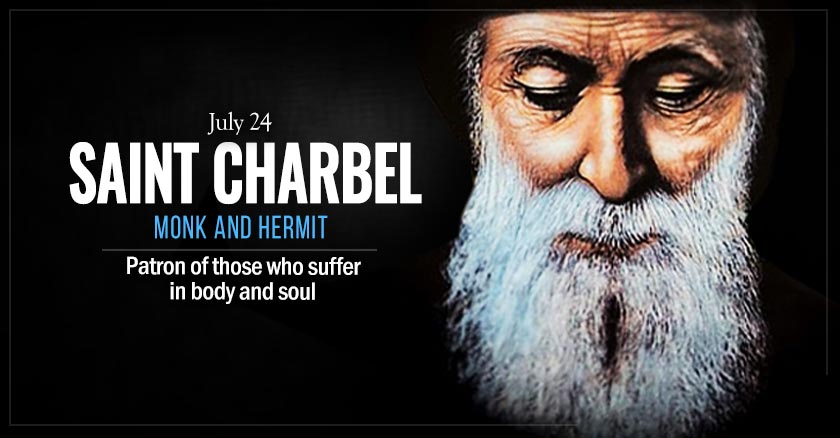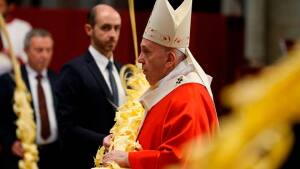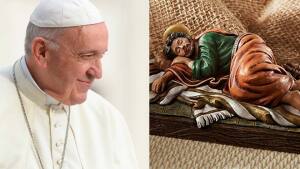St. Charbel served God day and night with total dedication through fasting, prayer and great sacrifices. He is the Patron Saint of those who
St. Charbel. Monk. Patron of those who suffer in body and soul.
Saint Charbel was a priest, a Maronite monk and a hermit. He is the first Confessor of the Eastern Church to be raised to the glory of the altar in modern times. He came from northern Lebanon with poor but respectable and devout parents. He learned a deep piety through continuous prayer and, since his adolescence, with a life inspired by detachment and denial of the vanities of the world, he always sought interior and exterior solitude.
Date of celebration: July 24.
Roman Martyrology: St. Charbel (Joseph) Makhluf, a priest of the Lebanese Maronite Order, who, in search of a life of austere solitude and in order to reach a higher perfection, withdrew from the monastery of Annaya in Lebanon to a hermitage, where he served God day and night in the total sobriety of life with fasting, prayer and great sacrifices, arriving on December 24th to rest in the peace of the Lord.
Biography of St. Charbel.
St. Charbel Makhlouf was born on May 8, 1828, in the village of Biqa-Kafra in the high mountains of northern Lebanon. He was given the name Joseph at his baptism, and was the last of five children born to very poor but very religious parents.
From early childhood he showed a strong attraction to prayer and solitude, and at the age of 23 he left home to become a monk in the Monastery of St. Maroun al Annaya. After being received into the novitiate, he was given the name of Charbel.
After completing his theological studies, St. Charbel was ordained a priest on July 23, 1859 and was assigned to the Monastery of St. Maroun, where he spent sixteen years, with his companions from Bretheren, living a life of prayer and devotion to God.
In 1875, St. Charbel received permission from his superiors to live alone in a private hermitage called St. Peter and Paul, which was located not far from the monastery, and which was used by priests during their days of retreat. It was a sturdy and simple cabin and had the basic necessities of life.
Sacrifices and penances of St. Charbel.
It was at this shrine that he spent the remaining 23 years of his life in the practice of great sacrifices and mortifications. His companions told him that he often wore a sackcloth, slept on the hard floor, and ate only one meal a day.
St. Charbel had an extraordinary devotion to the Holy Eucharist and a preference for saying daily Mass at 11:00 a.m., so he could spend most of the morning preparing for Mass, and the rest of the day in thanksgiving.
The miracles of St. Charbel.
St. Charbel was a humble monk who joined Christ in his sufferings and joys. He radiated peace and love wherever he went. Here are three of the miracles this Saint was able to perform in his life.
- In the year 1885, one of the many miracles performed by this Lebanese monk occurred. A large swarm of locusts descended on the fields of the poor farmers who lived near the monastery and began to wipe out the harvest. This terrible plague was going to cause a famine in the village for many days. The Prior of the monastery asked Father Charbel to go immediately to the infested fields, to pray over them and to bless them with holy water. The locusts disappeared almost immediately from all the fields that the Lebanese monk blessed, and the harvest was saved.
- In 1873 Father Charbel´s superior sent him to Prince Rachid Beik Al-Khoury´s palace to pray for his son Nagibem who was dying of typhus. The doctors had no hope for him. Father Charbel administered the Sacrament of the Sick to the boy and blessed him with holy water. A moment later, yu to the amazement of all the witnesses, the boy recovered. After finishing his medical studies, he became one of the most famous doctors in Lebanon.
- With great difficulty, several men brought a mentally ill man who lived in the village of Ehmej, to introduce him to the monastery of Annaya so that they could pray for him. When they entered the small chapel they could no longer cope with him, he had a superhuman strength with which he resisted. Saint Charbel approached the sick man and ordered him to enter with him and kneel before the tabernacle. The man immediately calmed down and, to everyone´s amazement, followed the monk´s instructions in holy peace. After praying for him, St. Charbel read him the Gospel and the miracle began to happen. The mentally ill man not only recovered his sanity, but later, he would marry. He had a large family and moved to the United States.
St. Charbel´s death.
After 23 years of sacrifice in such a poor existence, in 1898, St. Charbel suffered a stroke while officiating at Holy Mass and a priest assistant at the Holy Sacrifice was forced to take the Holy Eucharist from his hands.
St. Charbel died eight days after this episode, on Christmas Day at the age of 70. He was buried in a very simple way in the cemetery
The uncorrupted body of St. Charbel.
Strange events began to happen after St. Charbel´s death. From a distance one could see an extraordinary bright light coming from his grave, this effect lasted forty-five nights after his death.
Hundreds of villagers saw the miraculous light. This mysterious bright light became visible throughout the valley. The event caused a great stir in the whole town. Thousands of Christians and Muslims came to the tomb to see this extraordinary phenomenon (in the photo above you can see his first tomb). Some managed to dig the tomb and helped themselves from the remains of the saint´s clothes and locks of his hair as relics. For security reasons, the monastery officials requested permission from the church authorities to exhume the body and decided to take the body to the monastery.
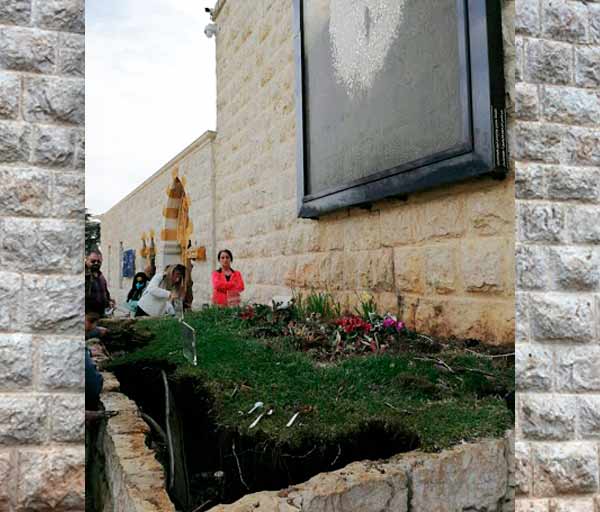
[Original tomb in which St. Charbel was originally buried from which the strange mysterious light came]
On the day of the exhumation, his tomb was opened in the presence of the superiors of the Order, the monks of the monastery, and many villagers, the body of St. Charbel was miraculously found in perfect condition to the amazement of all, even though torrential rain had flooded the cemetery on several occasions and his body had been found floating in the mud in a flooded grave.
Considering that St. Charbel was buried in the ground without a coffin, such circumstances should have accelerated his decomposition, but it did not.
After being cleaned and clothed in fresh garments, St. Charbel´s body was placed in a wooden coffin and placed in a corner of the chapel for the admiration and contemplation of the monks and faithful.
Amazing Science with the body of St. Charbel.
An extraordinary phenomenon occurred at that time: a reddish liquid came out of the pores of Saint Charbel´s body, and it smelled of blood. His clothes were stained with this liquid and changed twice a week. Small pieces of these canvases soaked in this mysterious fluid are distributed as relics and are said to have healing effects.
Among the medical men who examined St. Charbel´s body was Dr. George Choukrallah, who examined the body a total of 24 times over 17 years and stated
"I have always been amazed at its state of preservation and especially this reddish liquid exuded by this... My personal opinion, based on study and experience, is that this body is preserved by a supernatural power".
On July 24, 1927, the body of St. Charbel was placed in a new wooden coffin covered with zinc and was placed in a new tomb. The coffin was placed on two stones to avoid contact with the humidity of the ground.
On February 25, 1950, pilgrims to the shrine noticed a liquid seeping from a corner of the tomb. The Father Superior of the monastery, upon examining the liquid and fearing damage to the tomb, opened it in the presence of the gathered community.
The tomb was found dry and the coffin in the same condition as when it was placed in position, except that a reddish liquid was dripping through a small hole in the foot of the Saint.
The body of St. Charbel was once again found to be completely uncorrupted and perfectly supple and realistic. The liquid continued to exude from his body, and the garments were stained with blood. Part of the chasuble had rotted and the zinc tube containing the official documents was covered with corrosion.
For 67 years St. Charbel´s body remained perfectly preserved, it was documented and examined by medical professionals during this 67 year period and they described that this was only explained in a supernatural way.
St. Charbel and his legacy of sanctity.
On the occasion of his beatification on 5 December 1965, at the close of the Second Vatican Council, the Eastern Catholic hermit was described by St Paul VI as "a new and eminent member of monastic holiness", who "through his example and his intercession is enriching the whole Christian people". In that same year, the body of St. Charbel stopped exuding liquid and complied with the laws of nature. Today, only his bones are preserved and they are a red color.
St. Charbel was canonized in 1977 by St. Paul VI himself, who had previously acclaimed the Lebanese Maronite saint as an "admirable flower of holiness that blooms on the stem of the ancient monastic traditions of the East". He is the first Maronite saint included in the Latin script calendar.
In his homily for the Mass of the canonization of St. Sharbel, Pope Paul VI said:
"The Church needs people who offer themselves as victims for the salvation of the world, in a freely accepted penance, in unceasing prayer of intercession, like Moses on the mountain, in a passionate search for the Absolute, testifying that God is worthy of being adored and loved for himself."
The tomb of St. Sharbel has been a place of pilgrimage since his death. Hundreds of miracles are believed to have occurred through his intercession before God, both in Lebanon and around the world.
Prayer to St. Charbel.
O God of Silence, of peace and love, in the stillness your adorable and mysterious Trinity lives, loves and acts. In the silence of time, Your great Mysteries have been fulfilled. Blessed is he who calms all within himself and listens to the impetuous voice that leads to You. Your servant Saint Charbel heard this voice and closed himself up in solitude. He separated himself from a selfish world and spoke to you. You taught him to deny himself and to die, like the grain of wheat. You asked him to bind himself to You in a life of poverty, chastity and obedience. Freed from himself, he discovered You, Lord, he embraced the way of the cross and filled his spirit with the memory of the passion and death of Your Son. The Holy Mysteries became his life, the Eucharist his true food and the Mother of God his comfort. Day and night she sought you in the Scriptures and in the lives of the saints. Through endless prayer her whole life became a living hymn of praise to You and ended in a sacrifice of love that continues to proclaim Your glory. We beseech You, through her intercession, to inspire us to a life of prayer and sacrifice. Help us to live lives of quiet dedication to the service of Your Church, forever. Amen
Pray an Our Father, a Hail Mary and a Glory Be.
Saint Charbel, blessed monk, humble and faithful servant of God, pray for us. Amen.
Another Daily Saints.
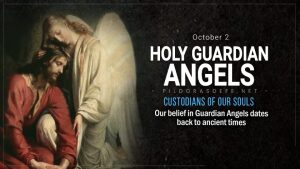
Holy Guardian Angels (Feast) Guardian Angels. Messengers of God
Feast of the Holy Guardian Angels or Guardian Angels, they are God´s messengers. They take care of us on Earth and guide us to Heaven. Custodians of Our Souls
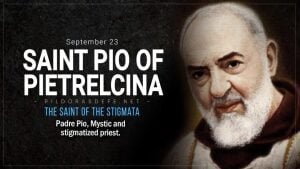
St. Pio of Pietrelcina. Mystic and stigmatized priest.
Padre Pio received the Stigmata and wore them for 50 years. St. Pio of Pietrelcina dedicated himself to Spiritual Direction and Confession. Biography
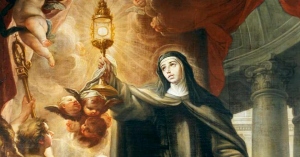
Saint Clare of Assisi. Disciple of St. Francis. Founder of the Poor Clares
St. Clare of Assisi was the founder of the Poor Clares. Her life was rich in works of charity. She was a disciple of St. Francis of Assisi
 Qriswell Quero, Venezuelan, faithful husband and father of a family. Electronic engineer and missionary of the faith. Committed to the proclamation of the Gospel. Solid believer that there are always new beginnings. Whoever has God has nothing to stop him.
Qriswell Quero, Venezuelan, faithful husband and father of a family. Electronic engineer and missionary of the faith. Committed to the proclamation of the Gospel. Solid believer that there are always new beginnings. Whoever has God has nothing to stop him.